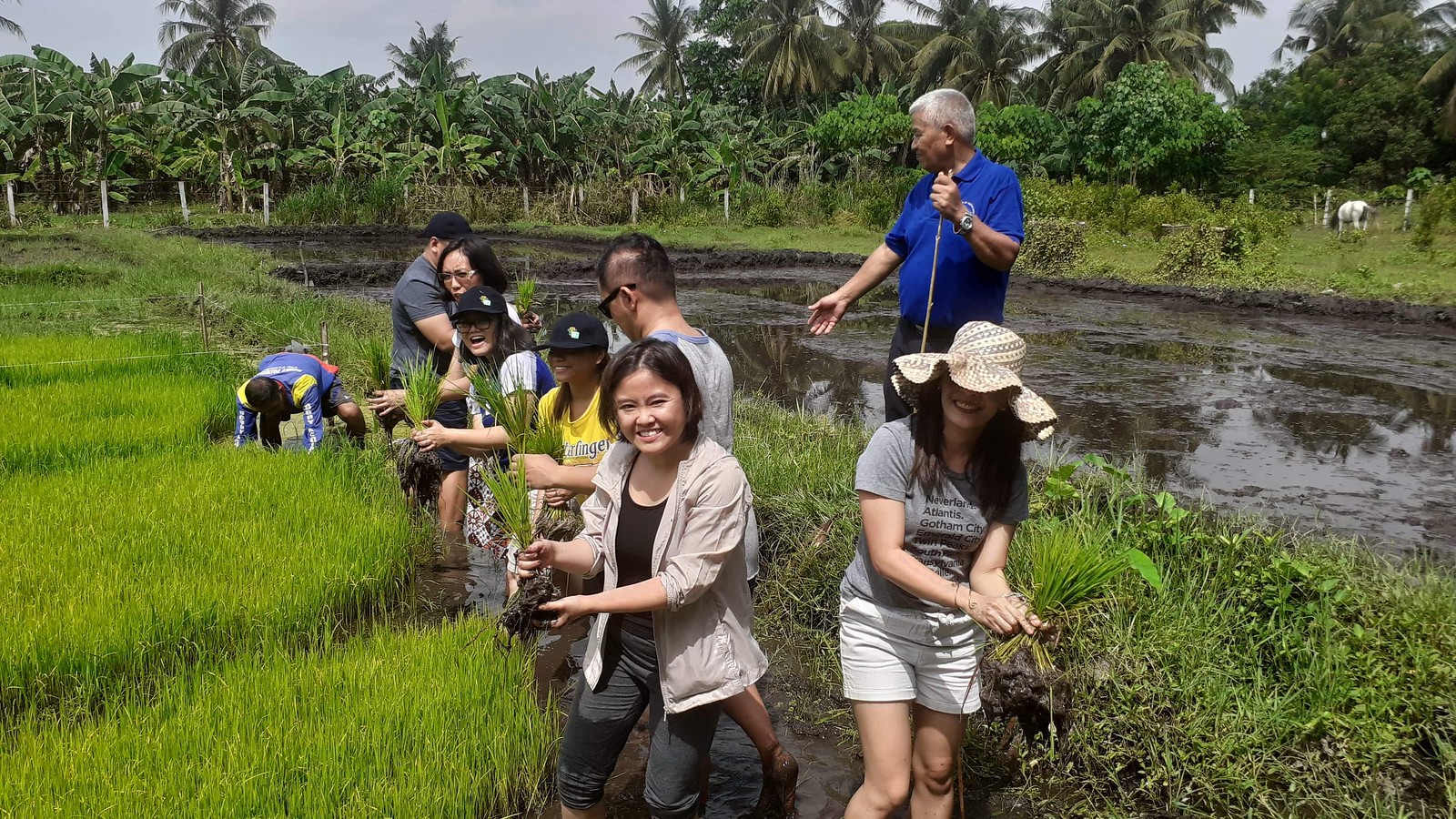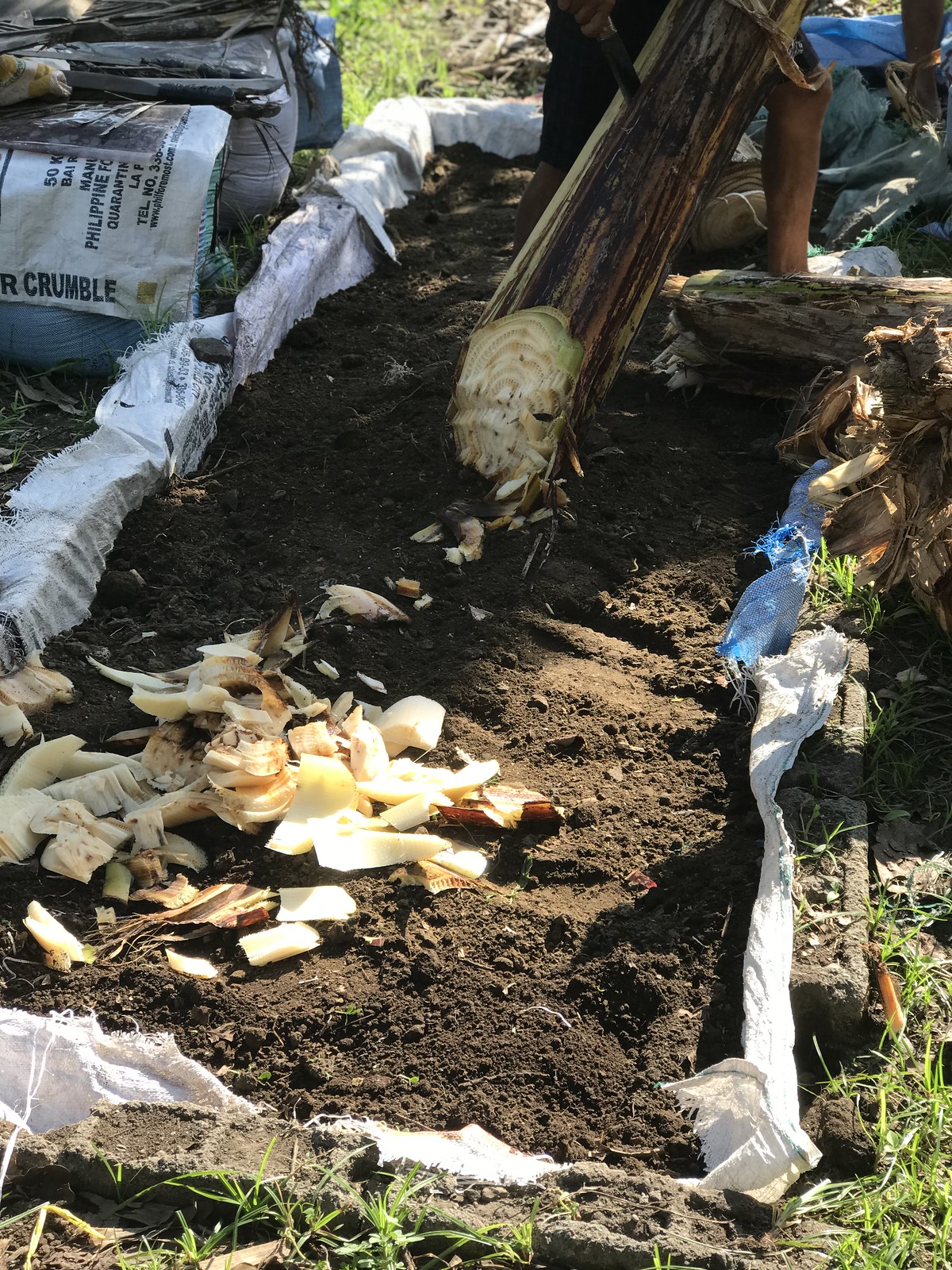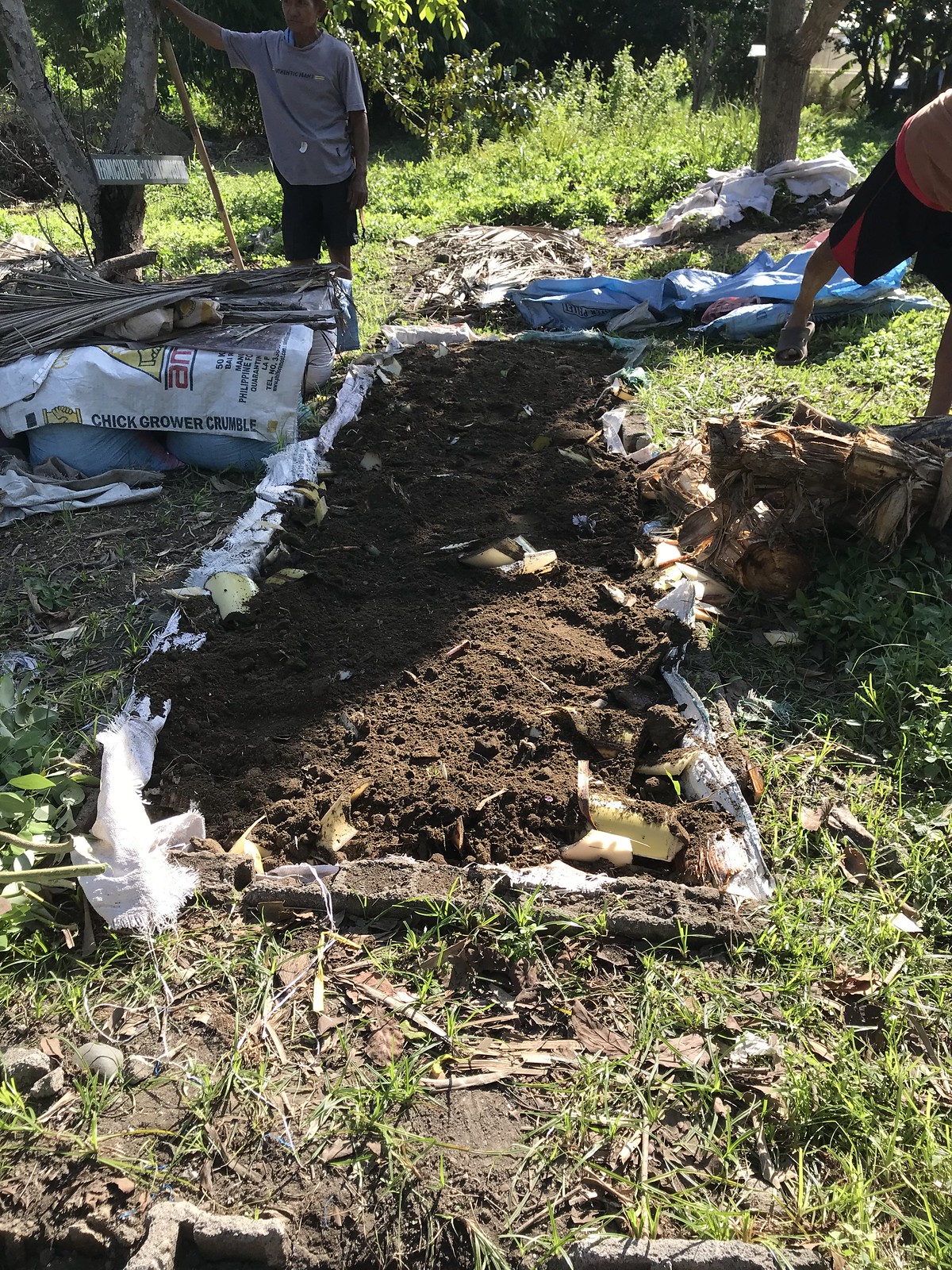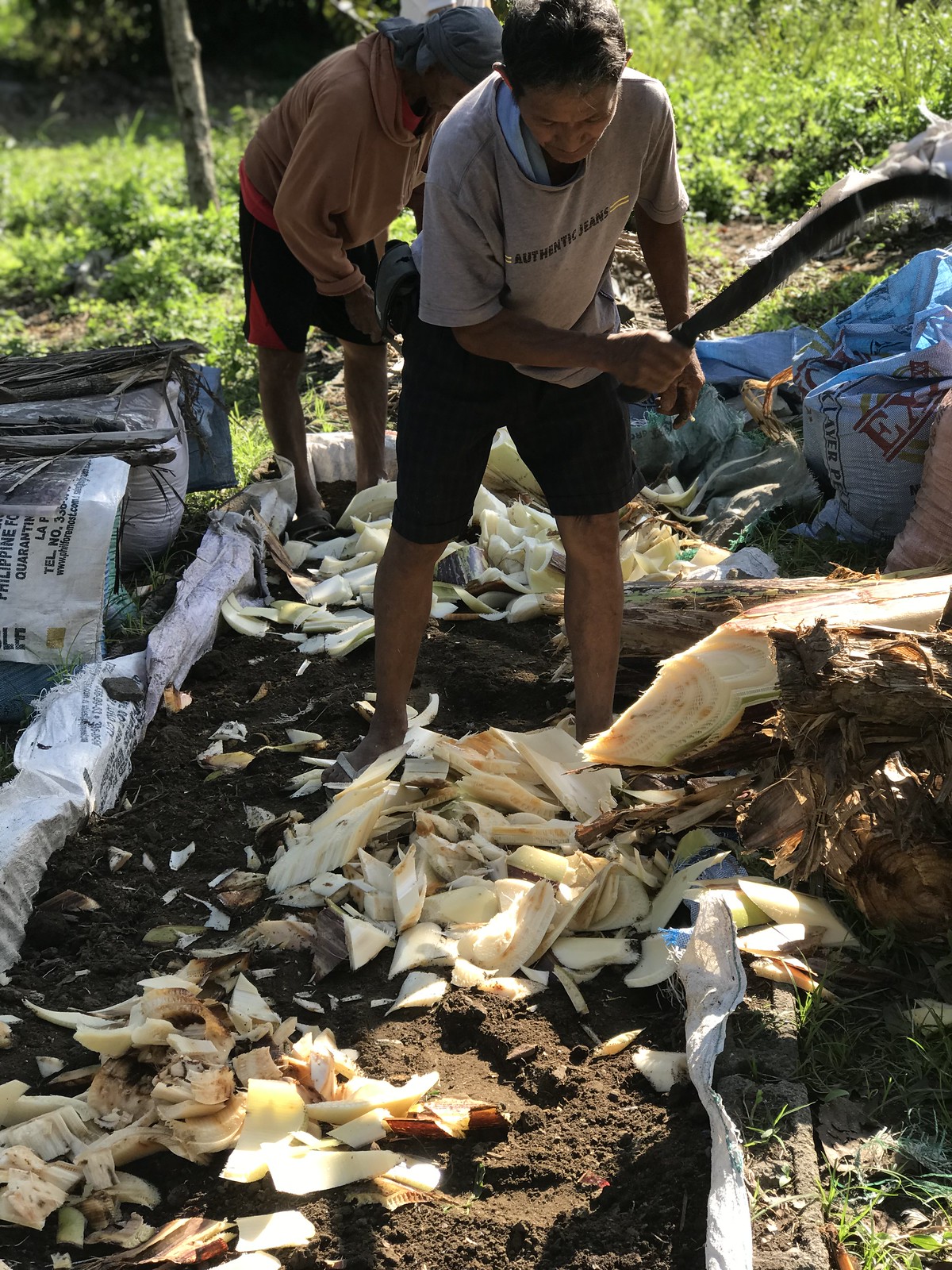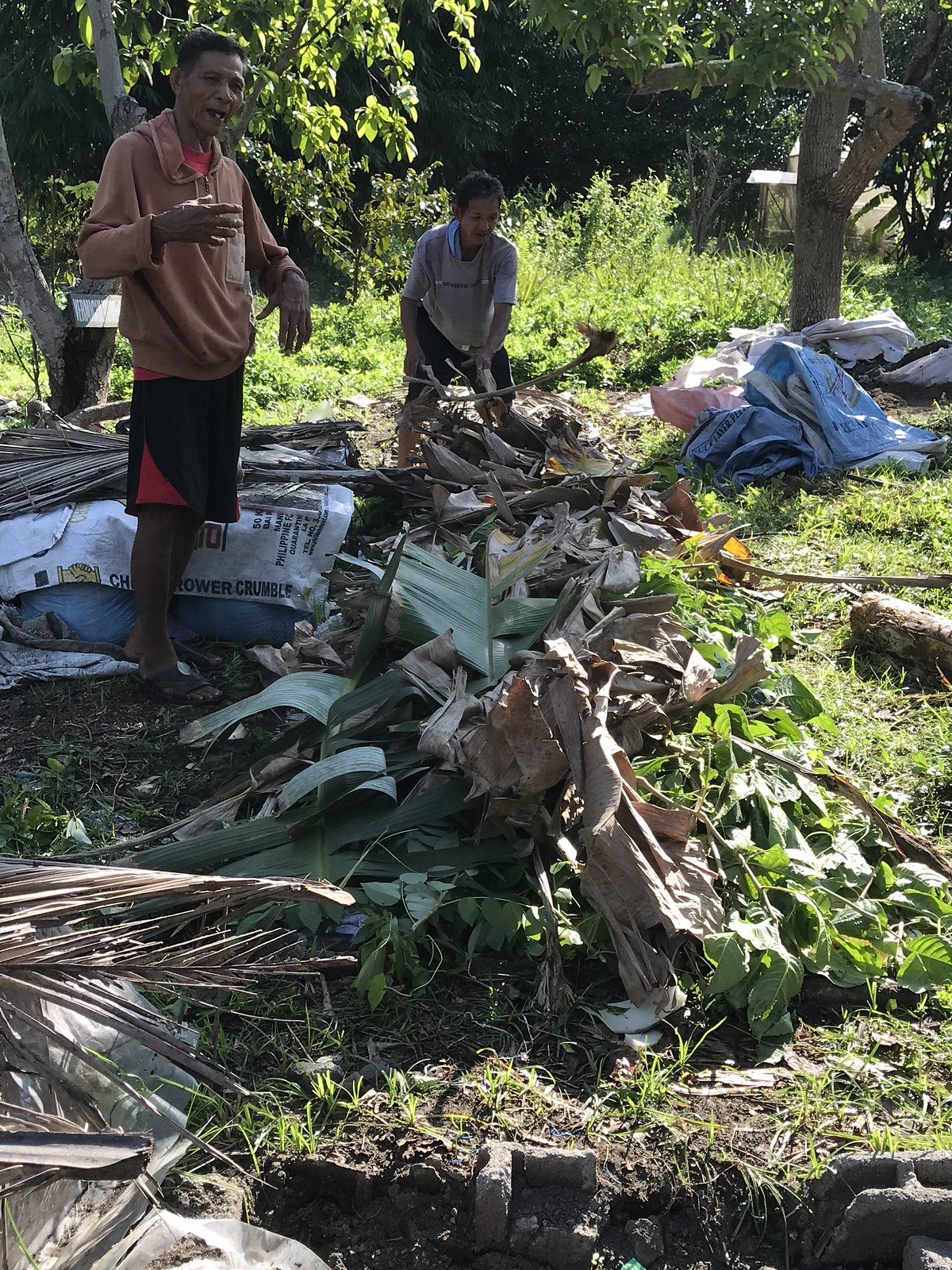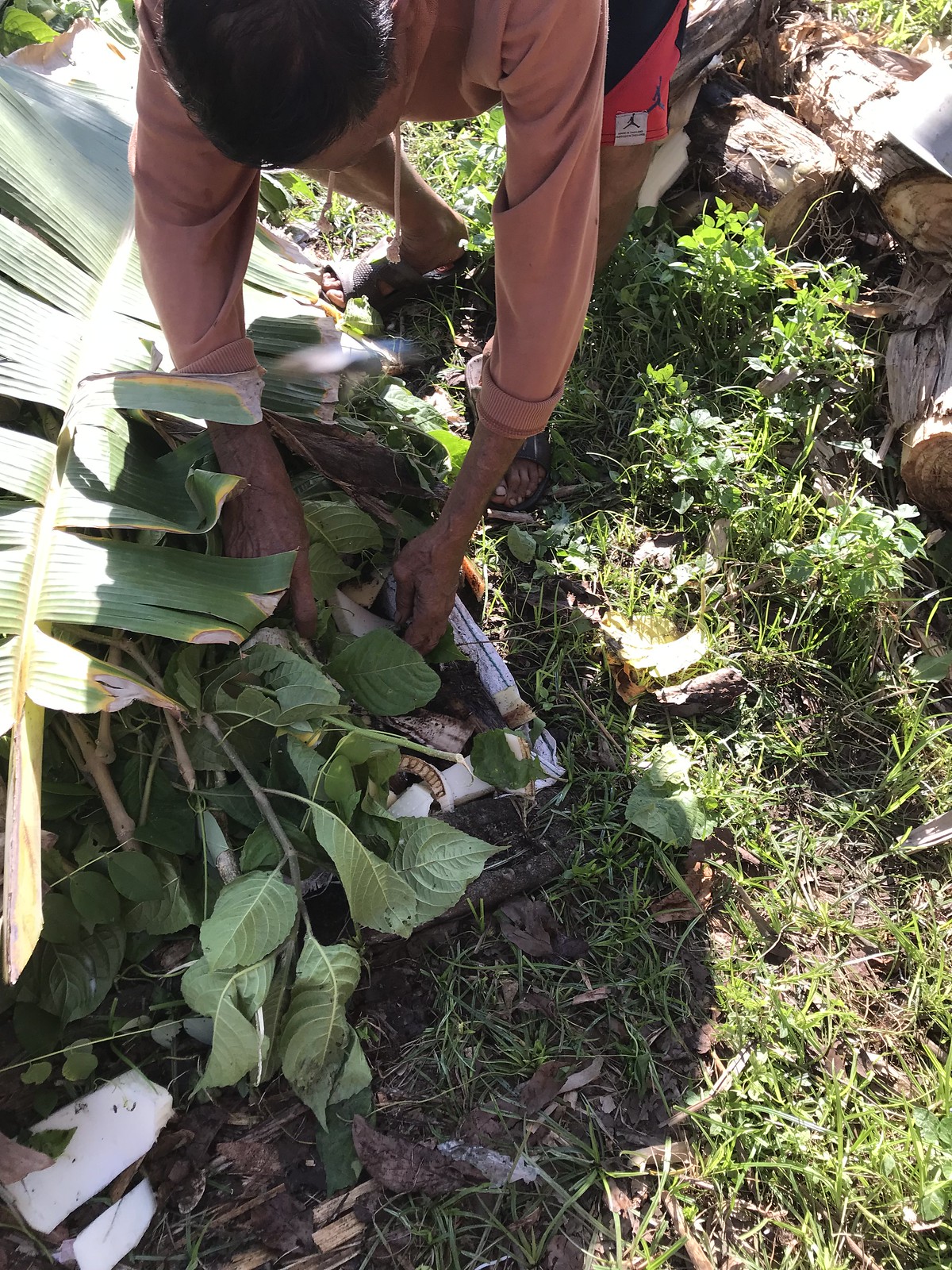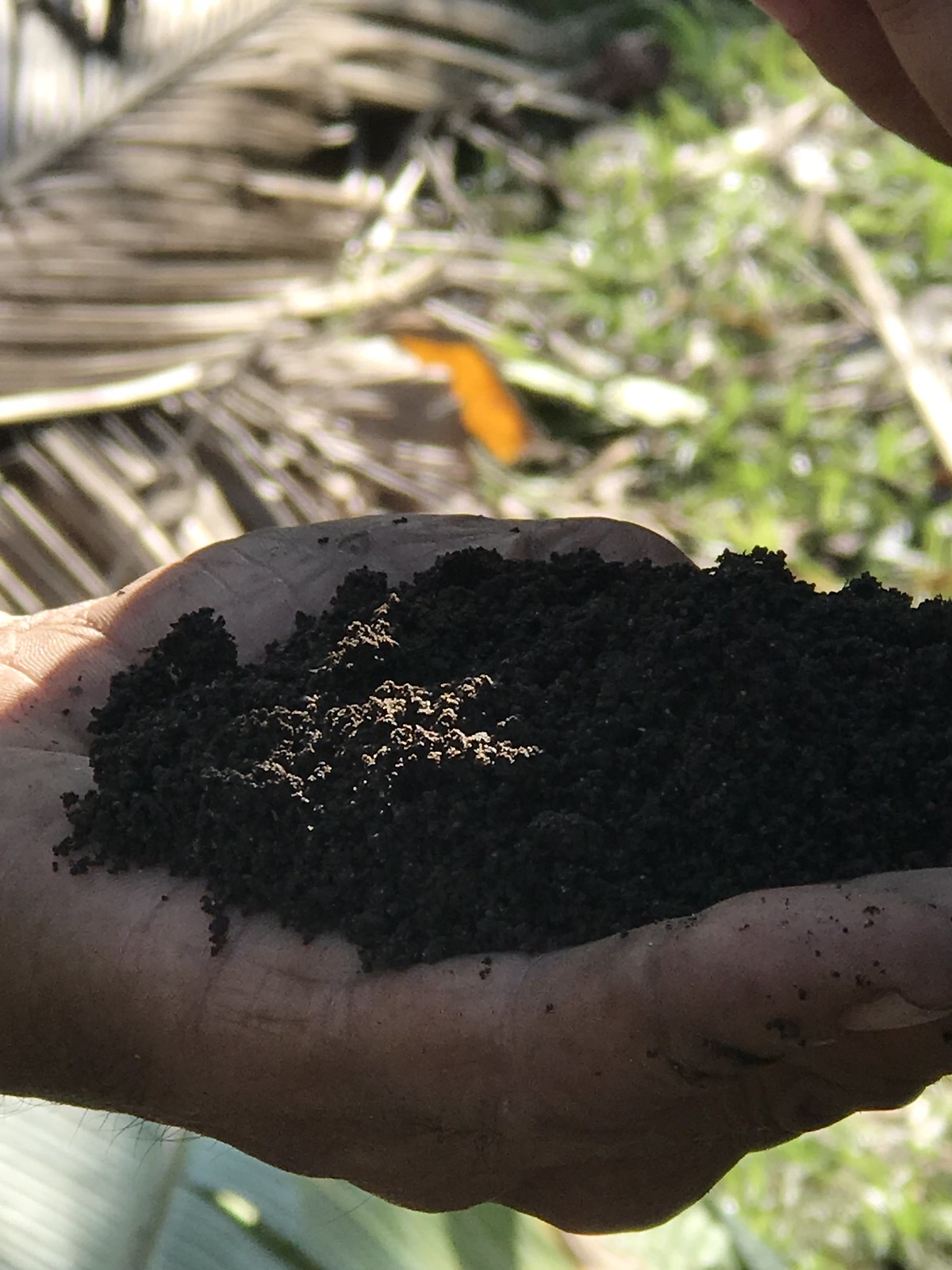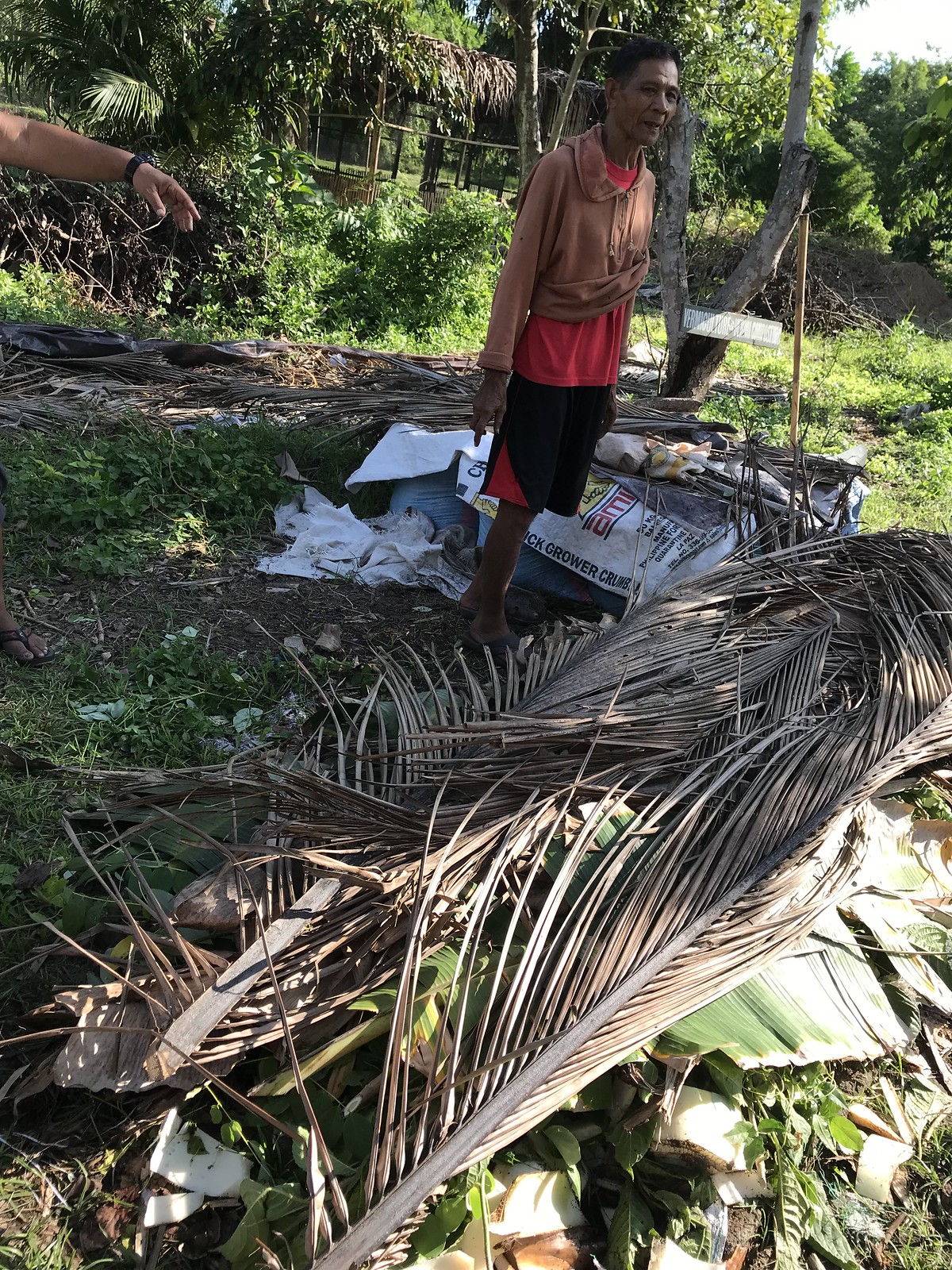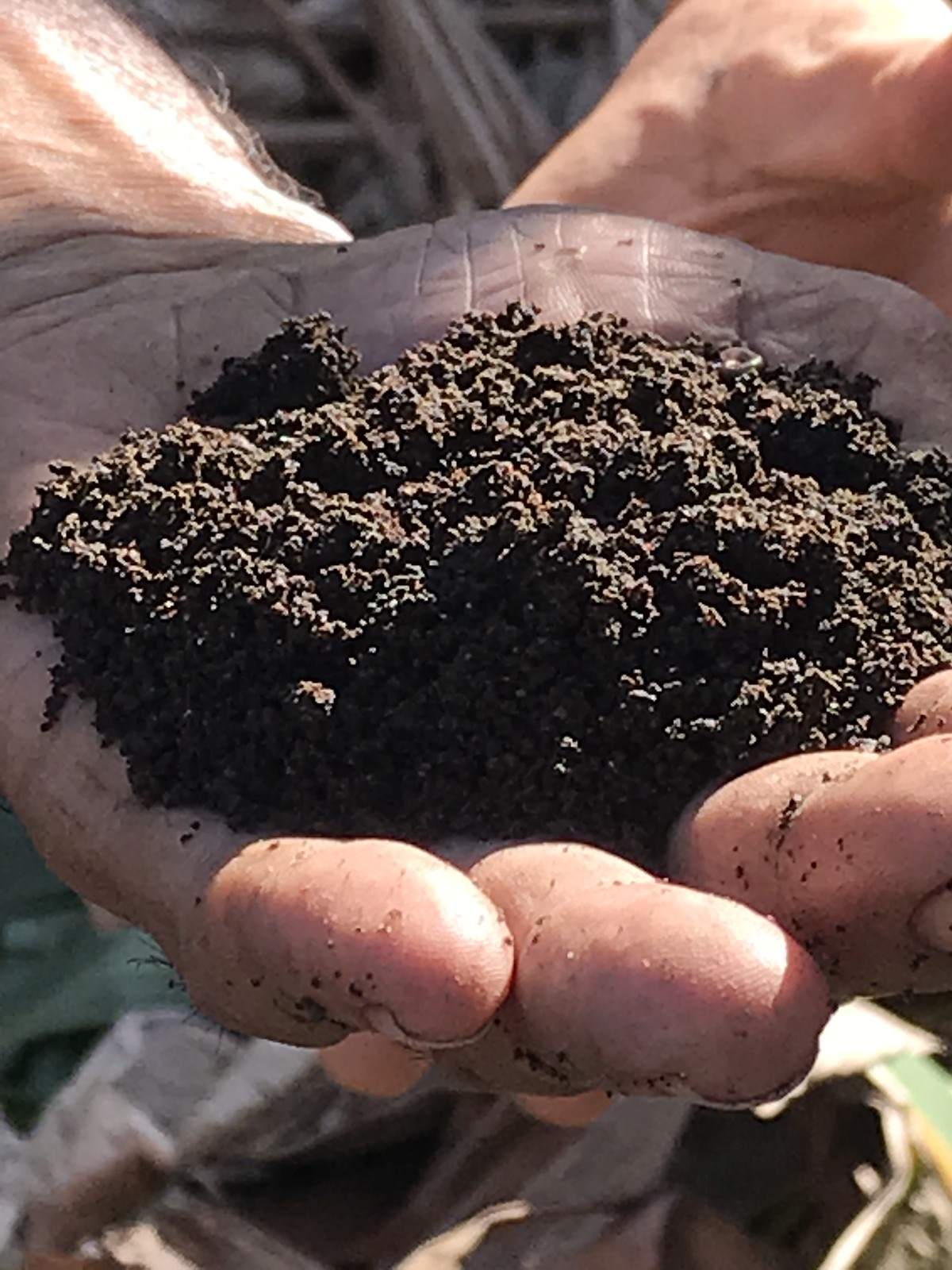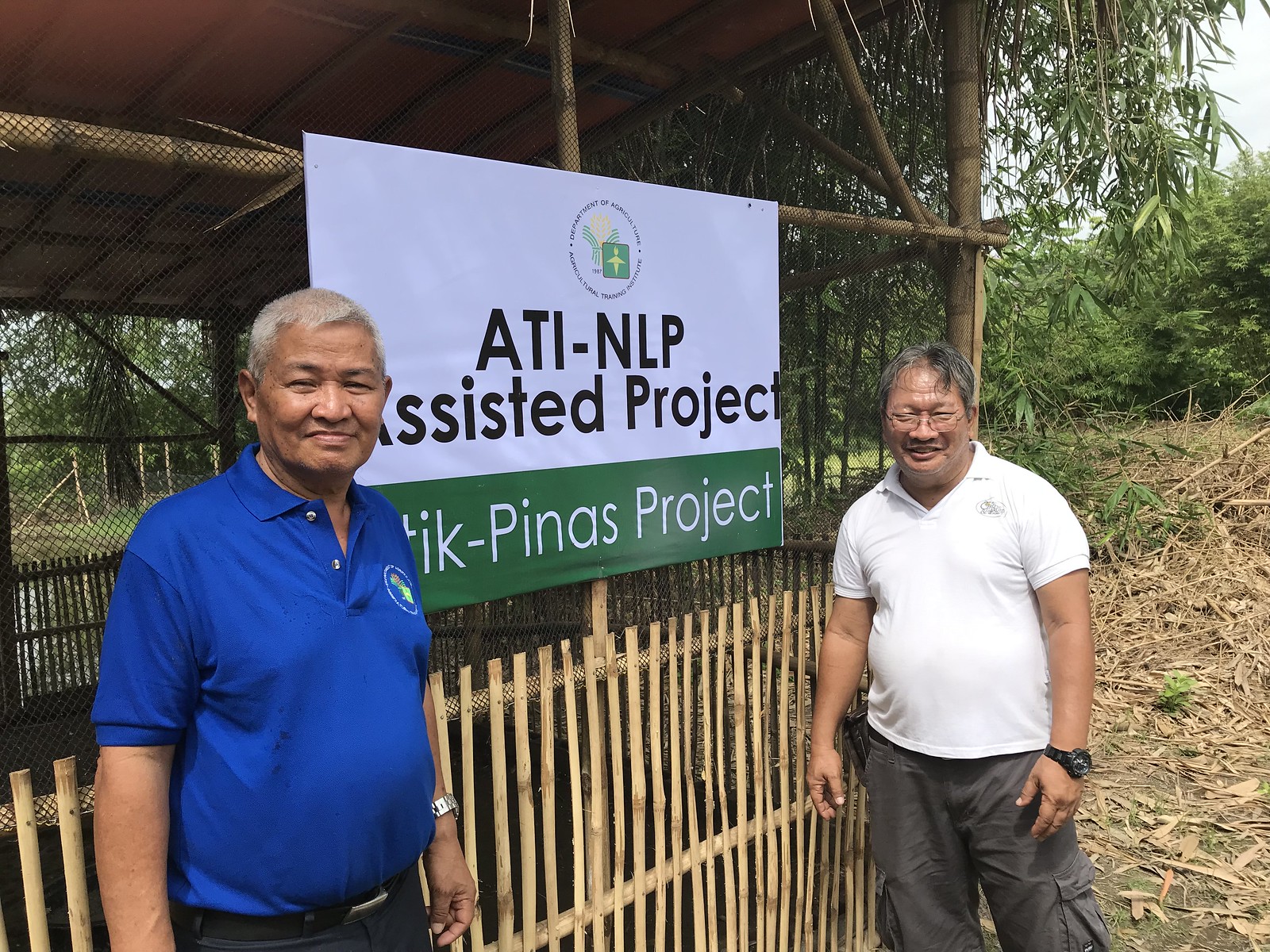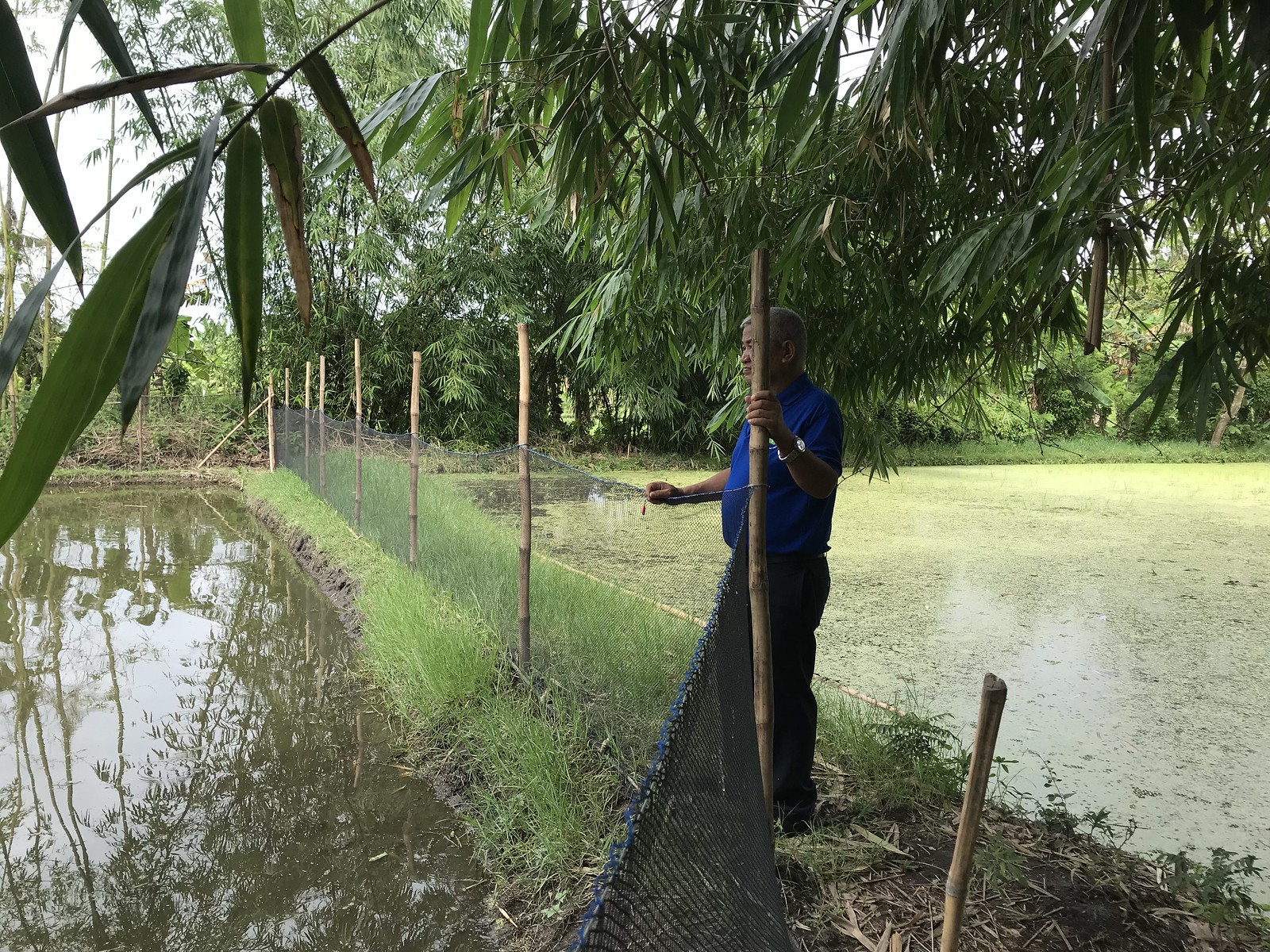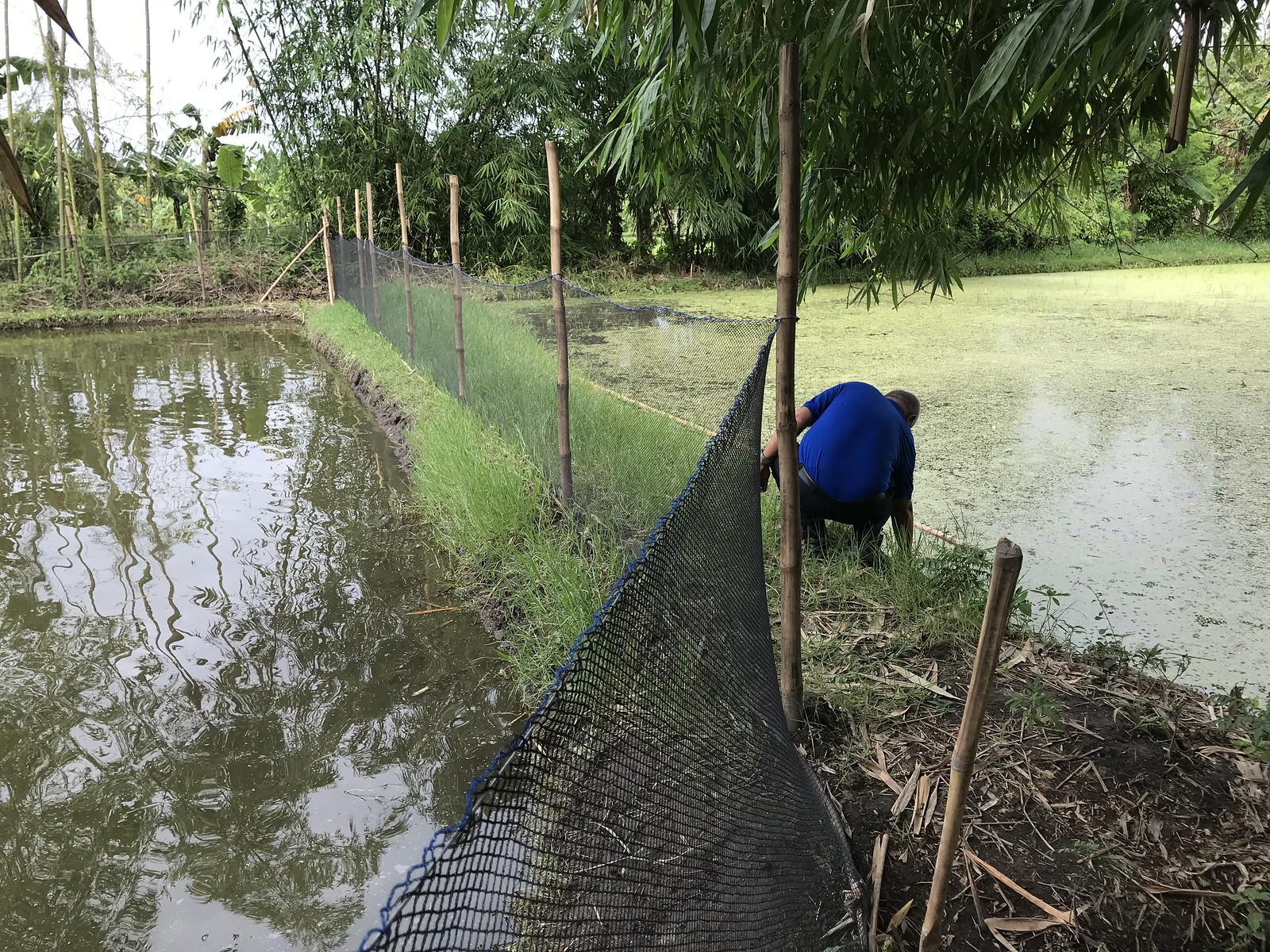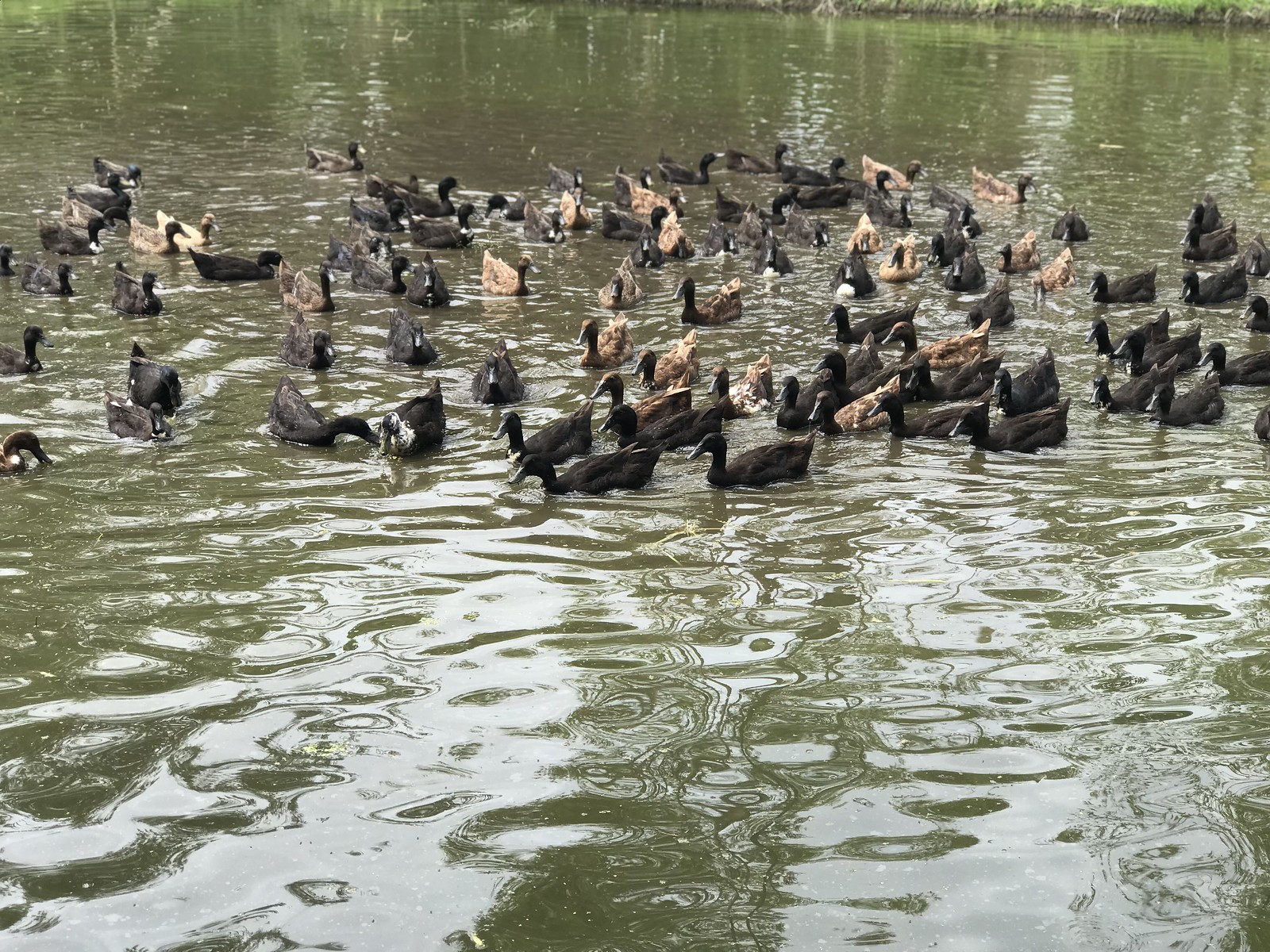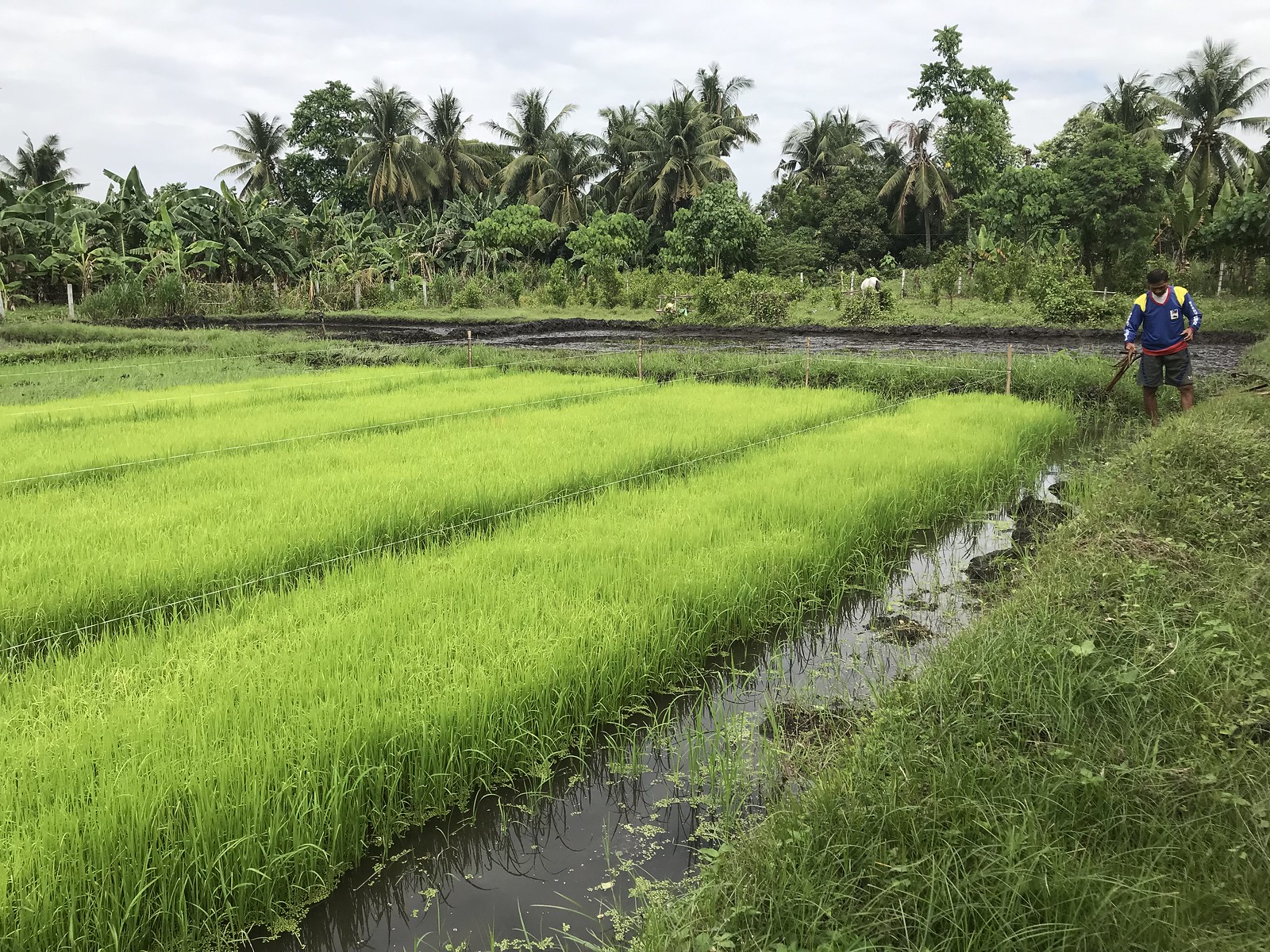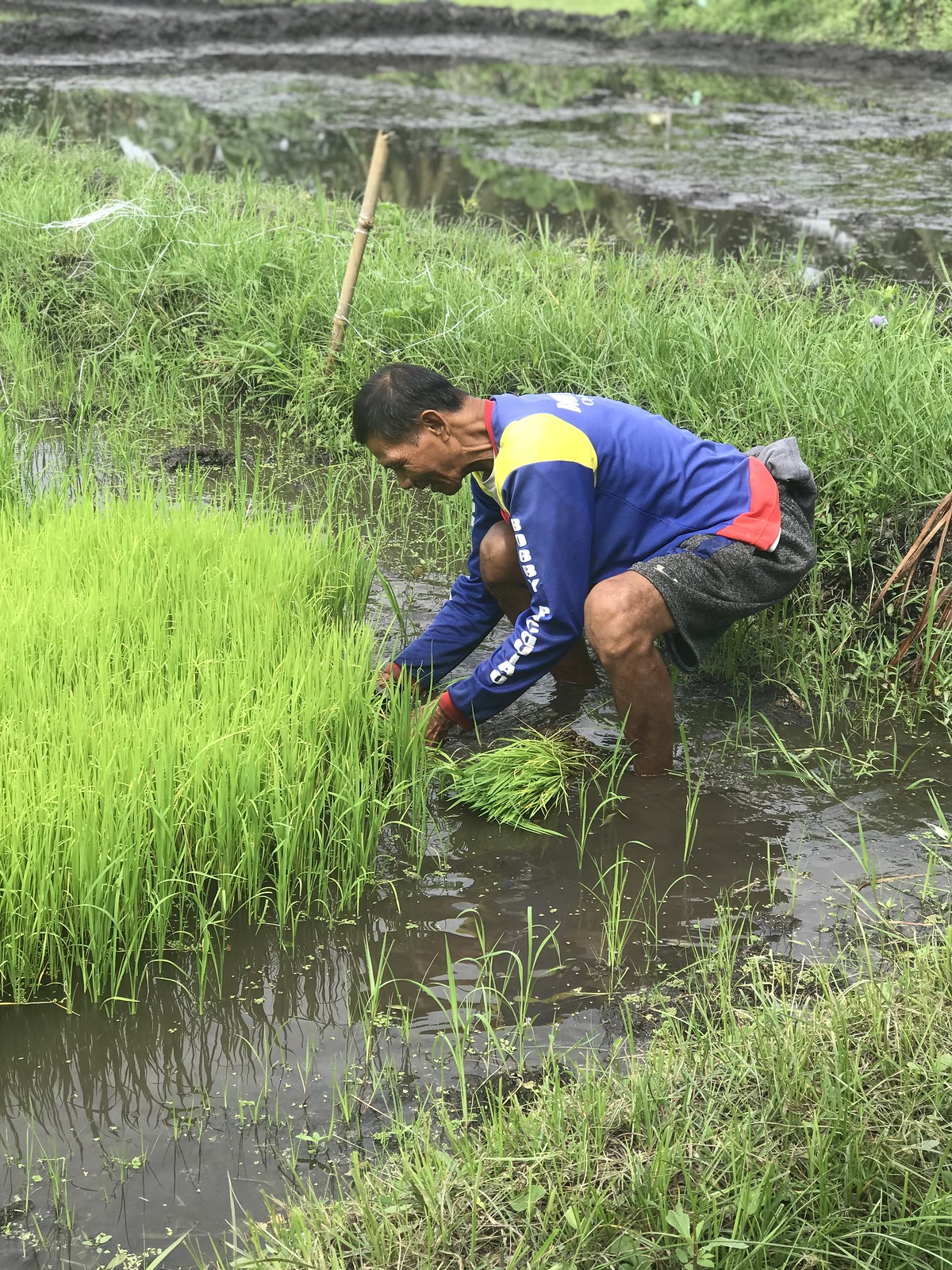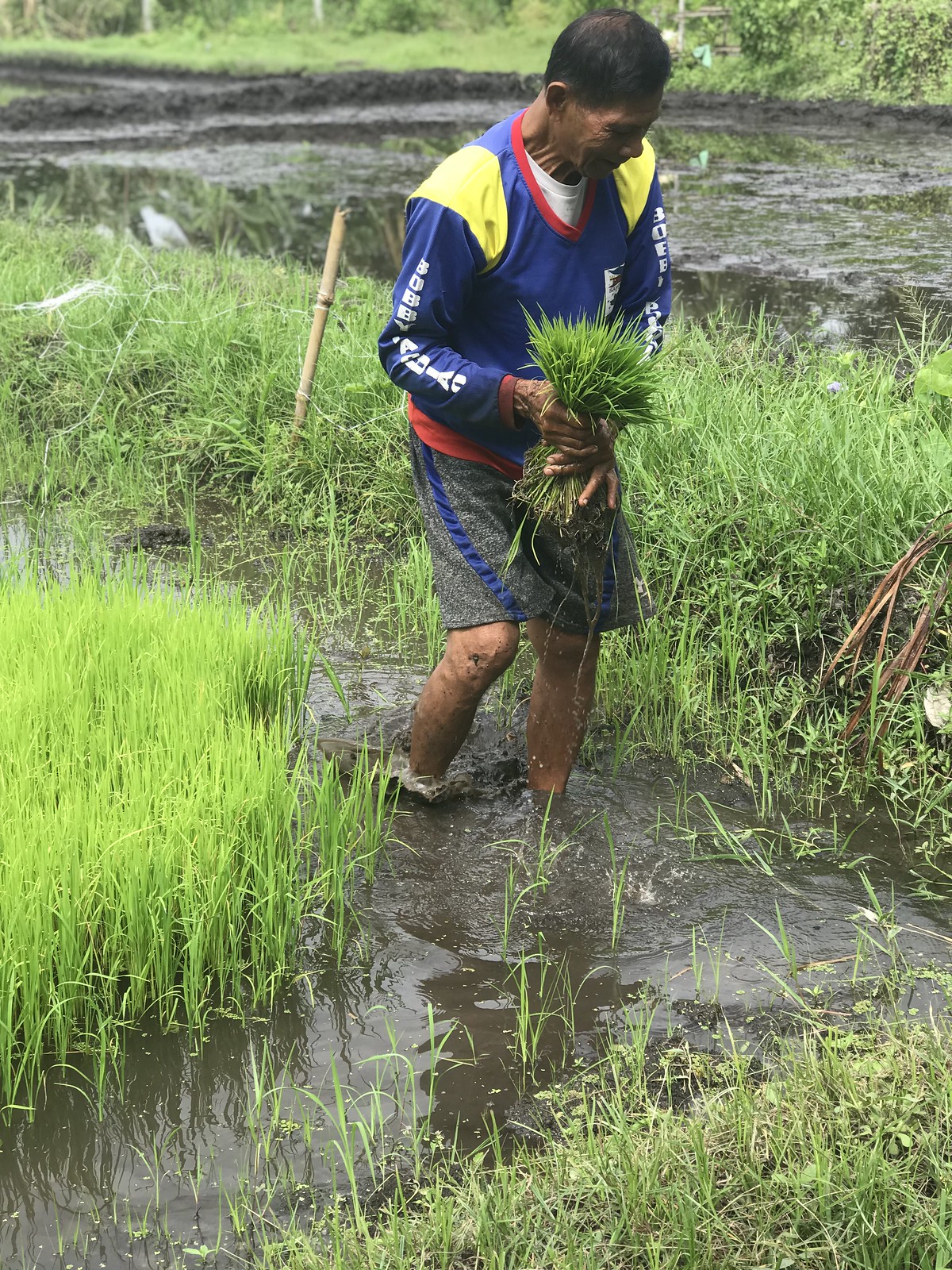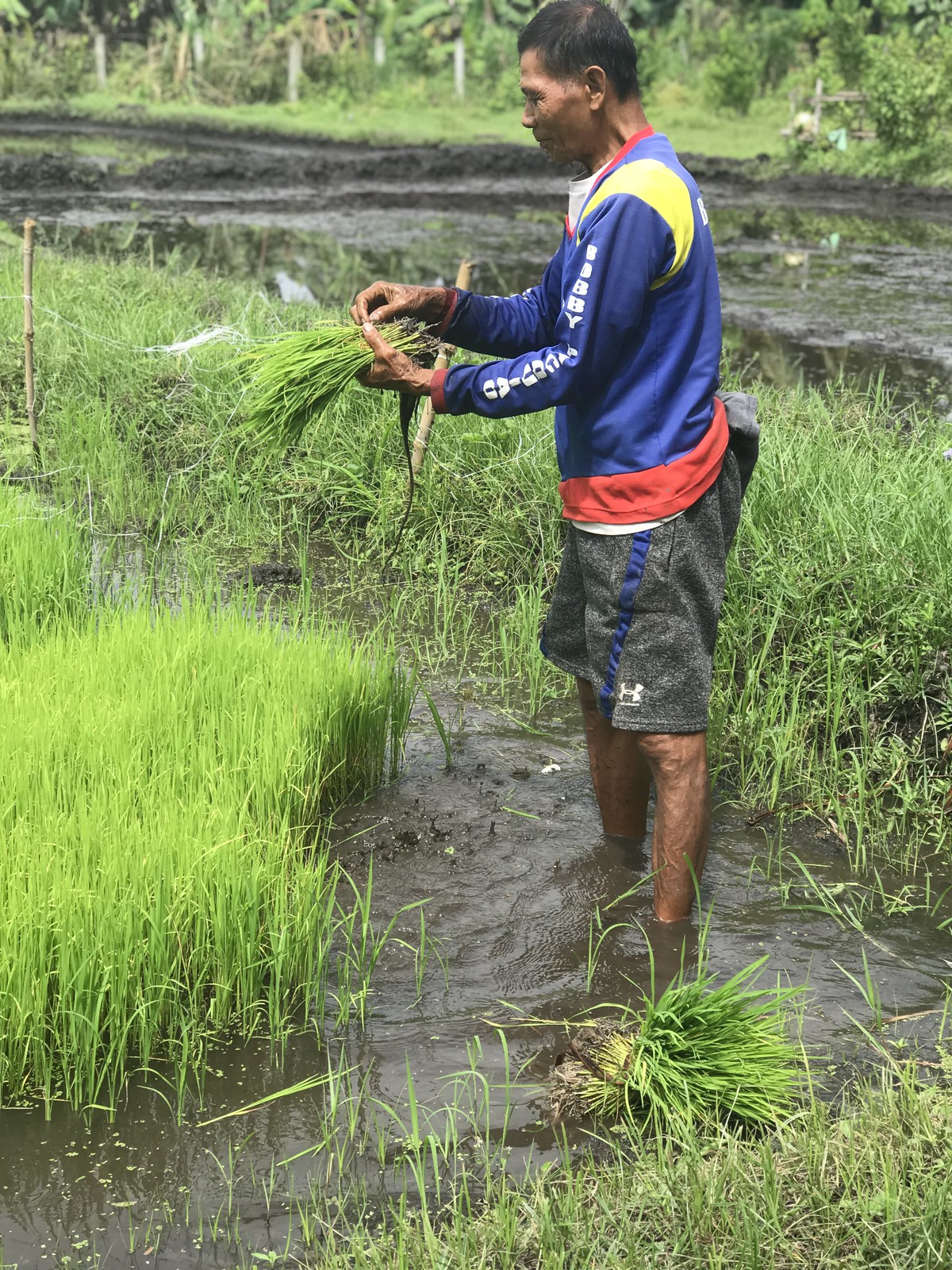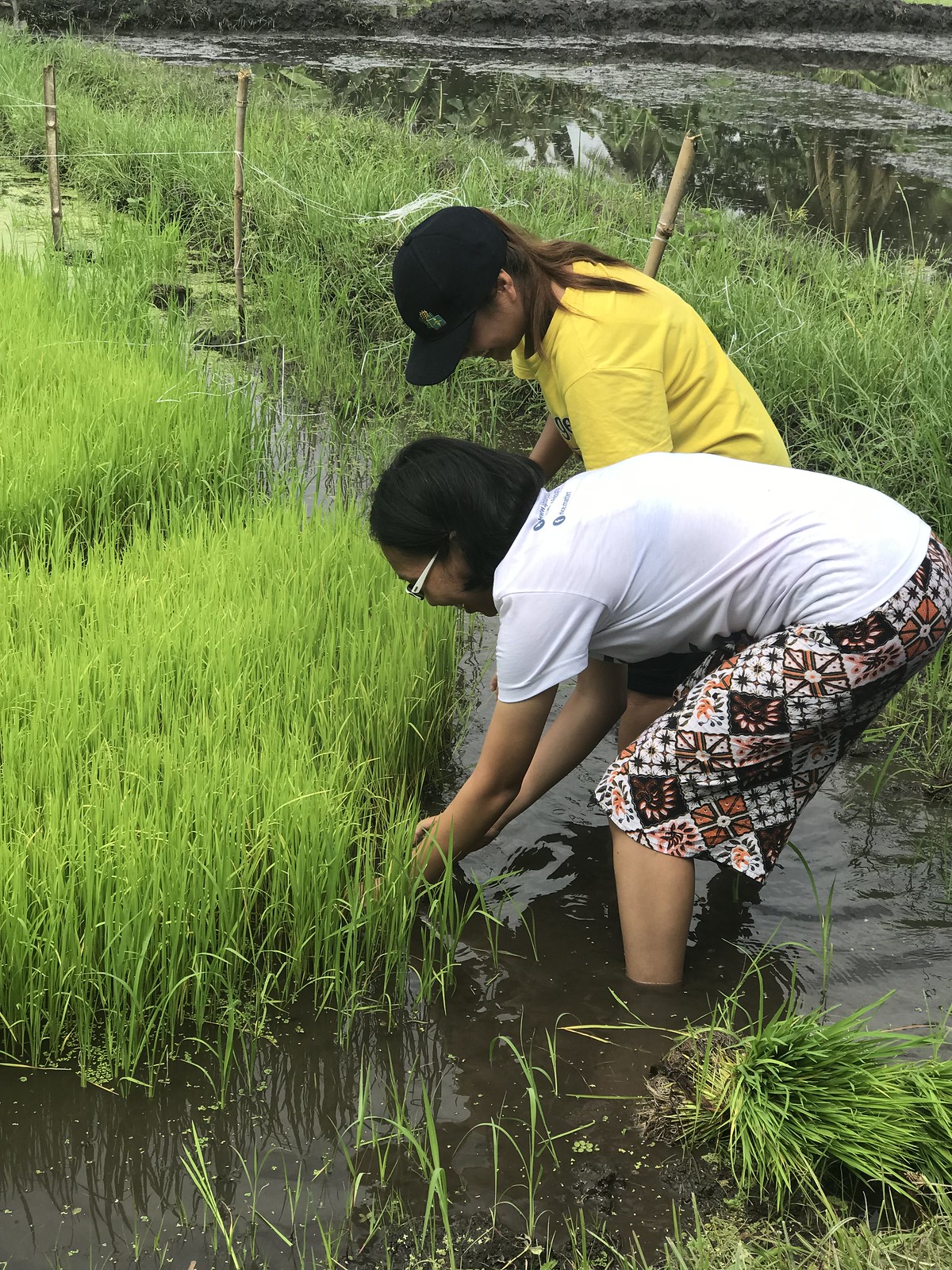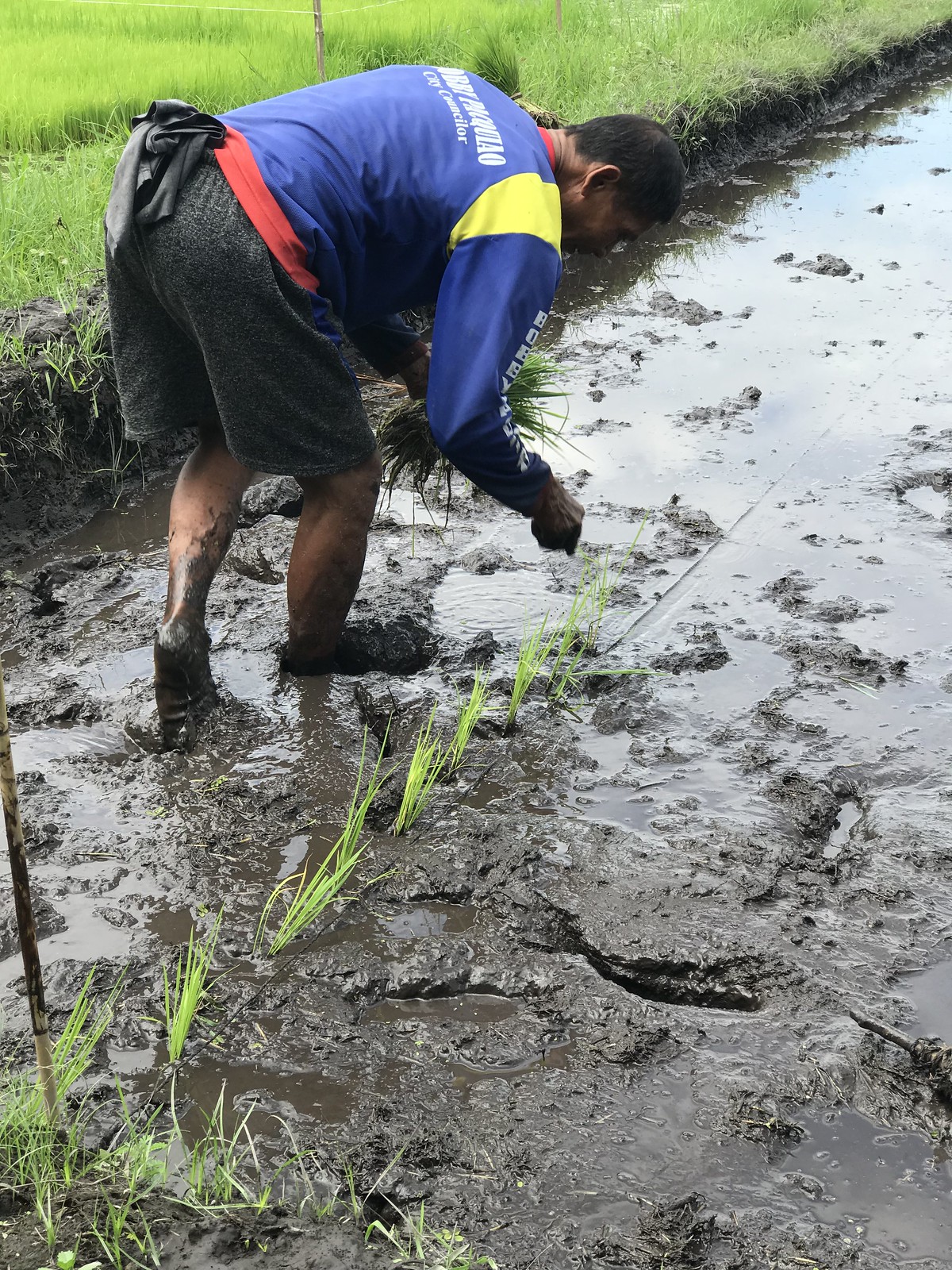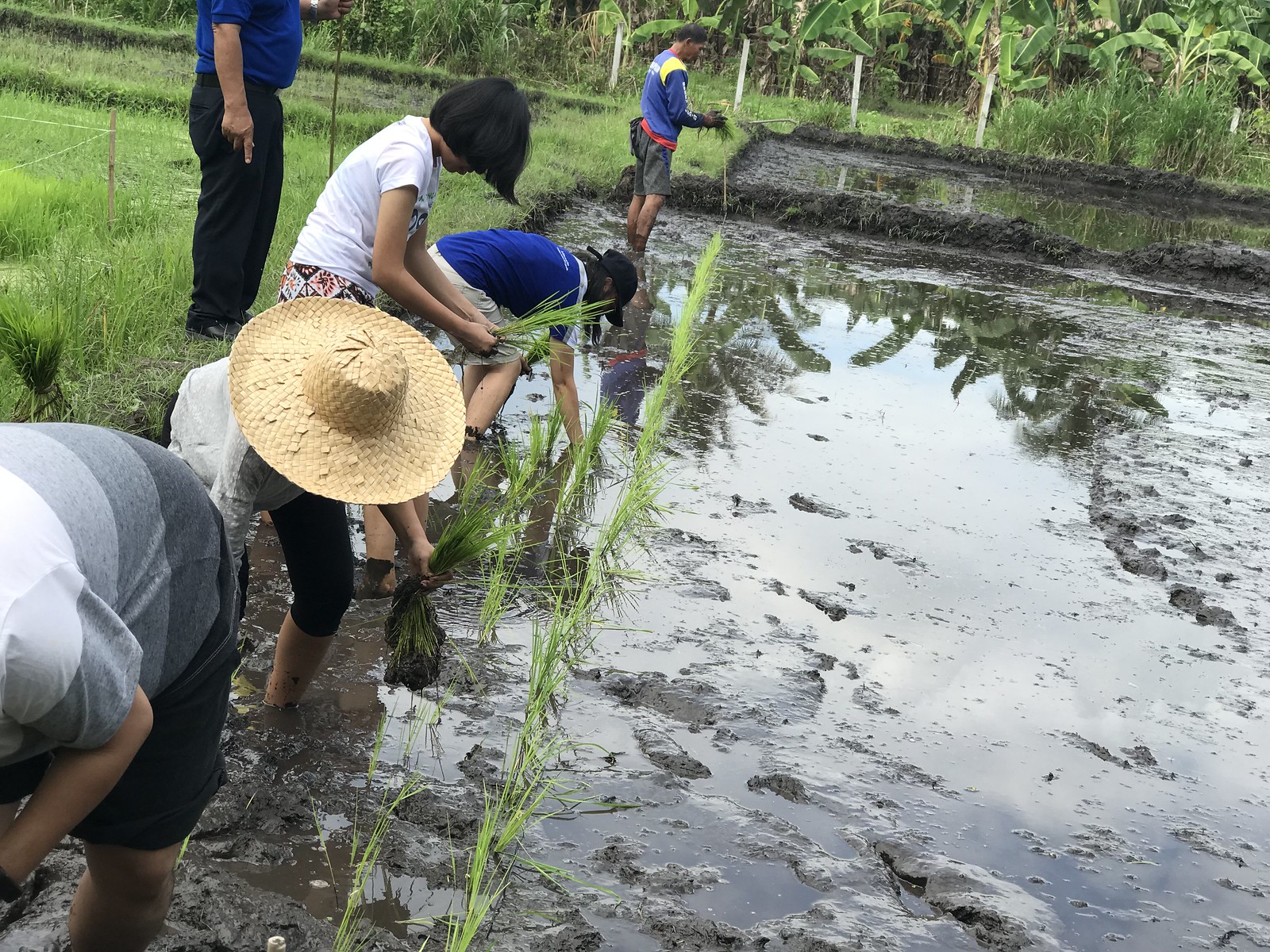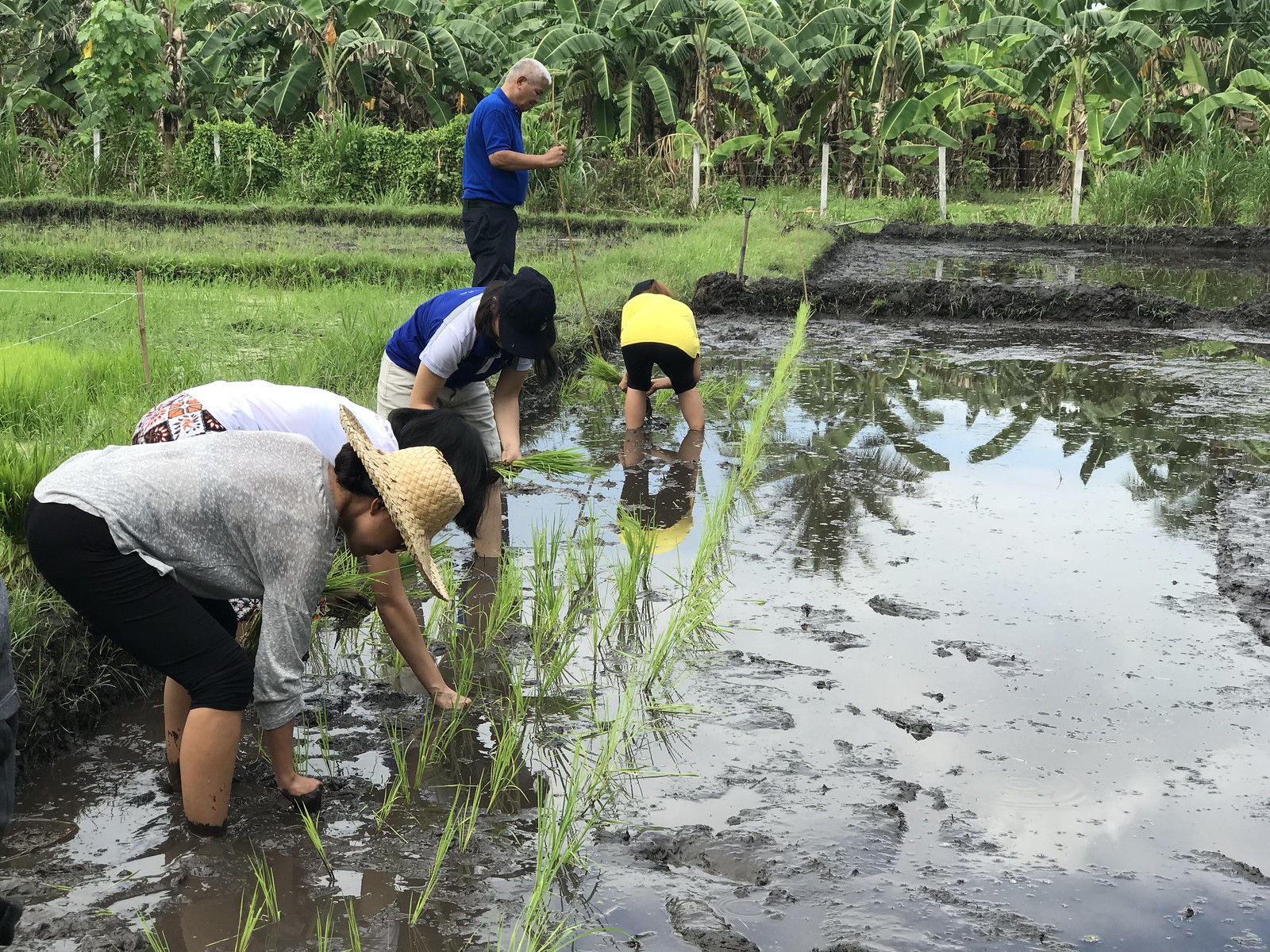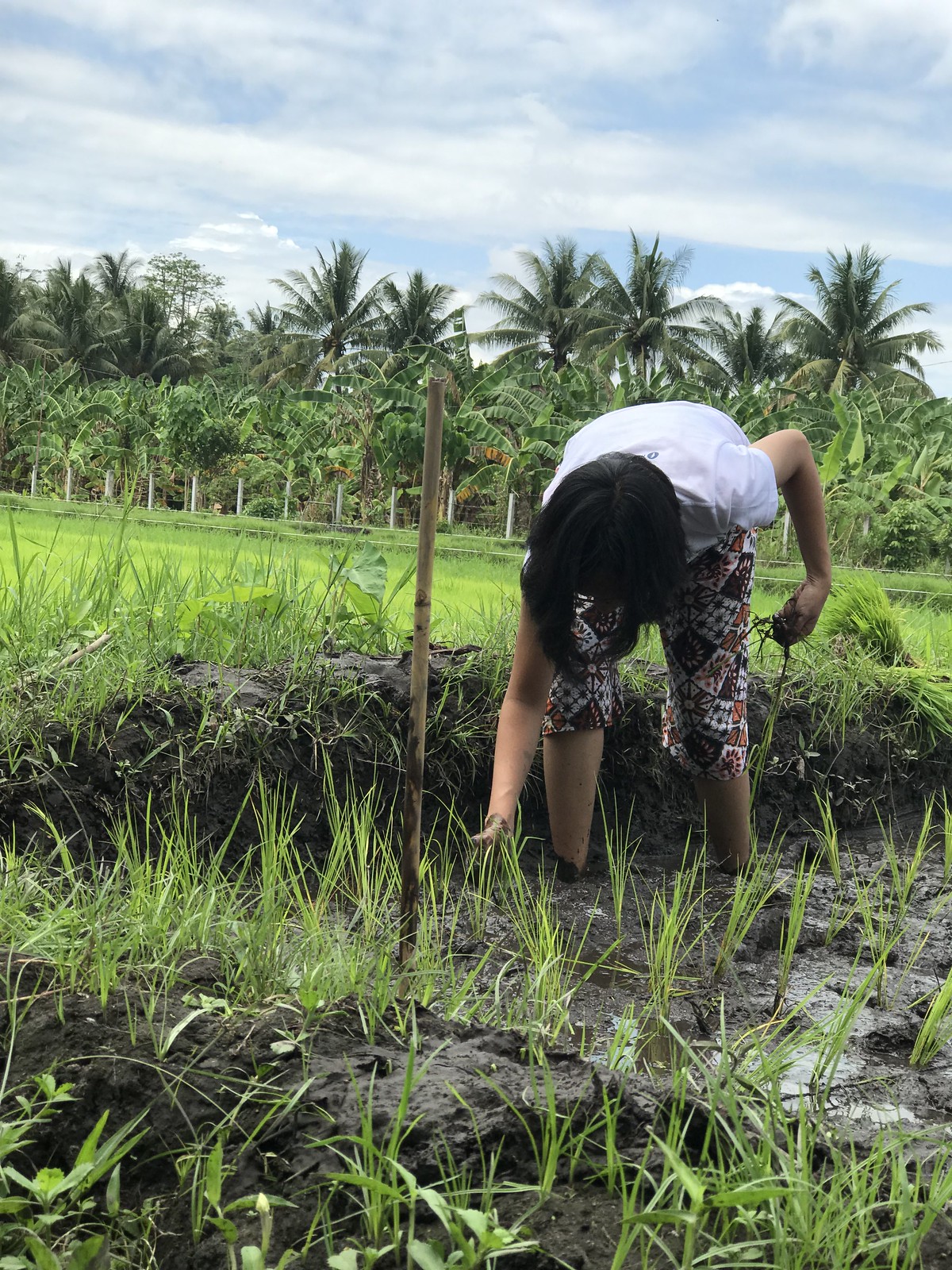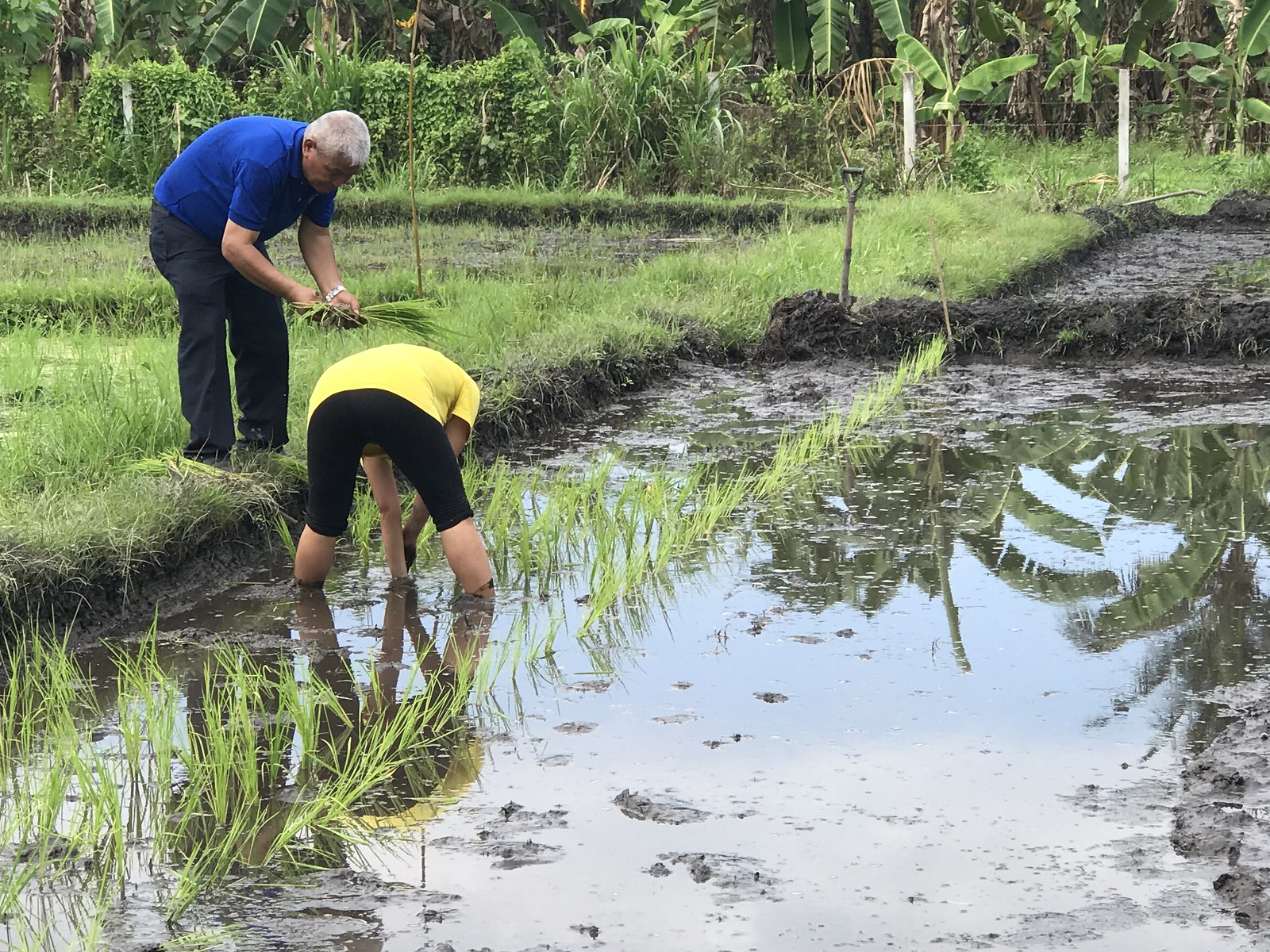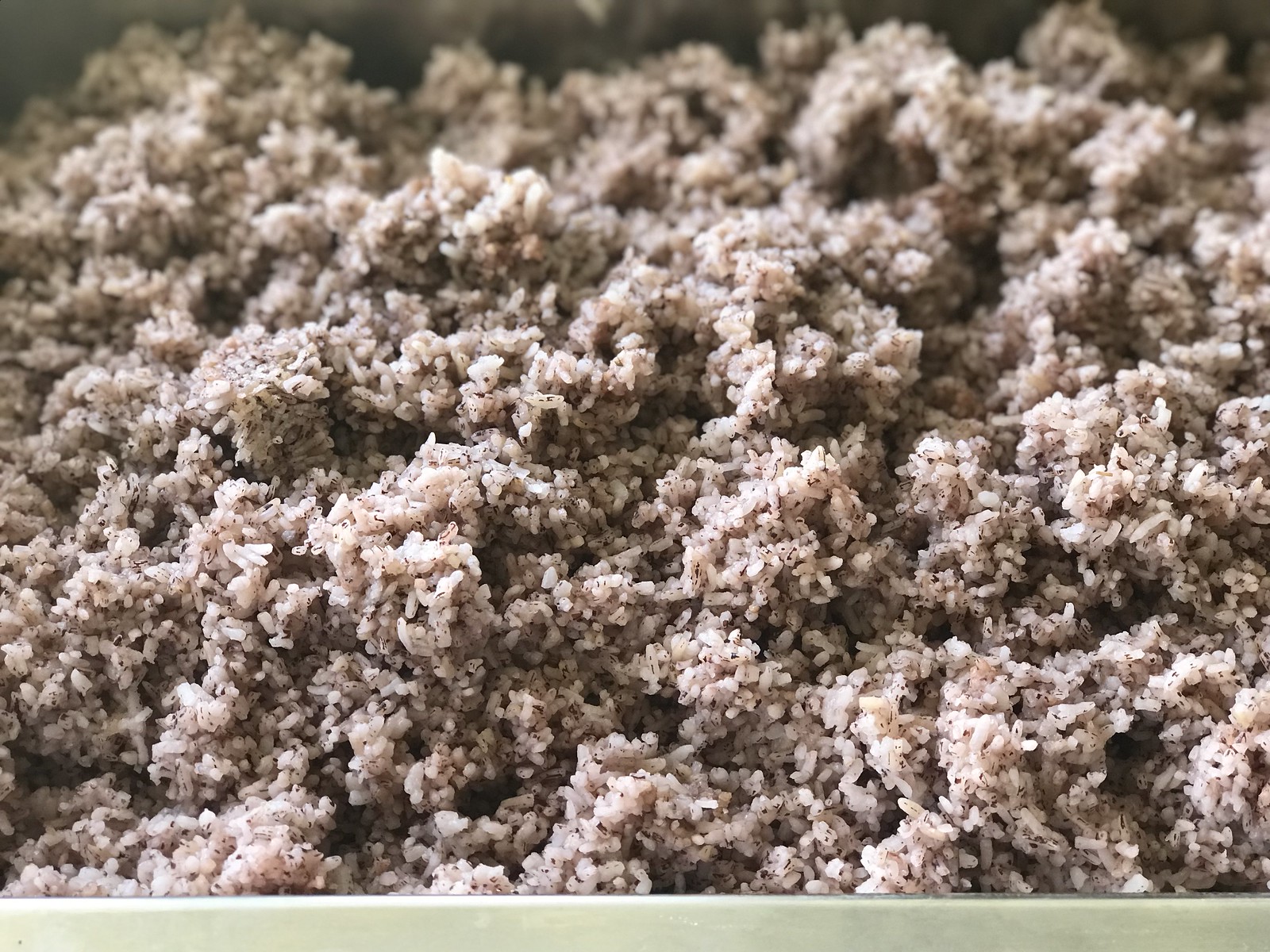Let’s learn how to make vermicast fresh off African night crawlers from the pioneer of vermiculture in Mindanao! Captain James Reamon was kind enough to do a demo for us at his ATI-accredited School for Practical Agriculture - the Felicidad Orchard and Garden Organics in GenSan. He also showed us his new project that will make easier feeding of Itik Pinas ducks. And, we were in for a surprise when he let us experience planting black rice first hand in his paddies! No hard work, no dinner! Hahaha.
The captain assured us that this is his tried-and-tested vermicomposting method. You would only need to layer cow dung, banana stems, green leaves and banana leaves properly to create an environment where the worms would work for you (without pay) day and night by feeding, pooping and multiplying. Sounds simple, right?

First, you need to prepare a 4-meter by 1-meter bed with loose hollow blocks as the wall you can reuse later (don't use cement) and used sacks for easier handling (and to retain moisture I guess) of the vermicast later on. Depth of the bed is max at 8 inches. Any deeper and the worms won't go down because they like cooler temperatures.
Layer 1 - You need dried and cold-to-the-touch cow dung, around 3 sacks. Use only dung from grass eaters - grass-fed cows and goats are recommended. If the dung is hot, it is still in the process of decomposition and is still emitting biogas.
Layer 2 - Chop saba banana trunks and/or banana peels. You need to keep the bed filled with Nitrogen (N), Phosphorus (P) and Potassium (K).

Layer 3 - Add another cow dung layer.
Layer 4 - Chop saba banana trunks again and sprinkle water. Do not drown the worms. Just enough that when you squeeze, there will be a drop or two.
Layer 5 - Put in the leaves (make sure they are still green when cut). They use trichantera or kakawate or madre de agua, salvina and water hyacinths as biomass. Don't use grass (many seeds so weeds may grow) and don't use ipa, sawdust and dayami (hay).
Layer 6 - Add green banana leaves (worms like cool temp) then coconut palm leaves as cover.
Spread 1 kilo of worms on just the 4 corners of the bed. They will make their way from the cooler corners inside in time. Wait for 3 months and the worms would have made enough vermicast and multiplied at the same time! The worms are hermaphrodites (can act both as male and female) so they are both pregnant when they mate. The African night crawlers are also horizontal borrowers unlike other worms that go vertical.
How to Make Vermicast, Simple Vermicomposting Tips, Itik Pinas Housing and Planting Rice at Felicidad Organic Farm in Mindanao
The captain assured us that this is his tried-and-tested vermicomposting method. You would only need to layer cow dung, banana stems, green leaves and banana leaves properly to create an environment where the worms would work for you (without pay) day and night by feeding, pooping and multiplying. Sounds simple, right?

This flat bed in open air is the end result after three months - that long so that you get worm babies too! You just gather the worms to move to another fresh bed and collect the worm poop (vermicast) to use as fertilizer or sell both the multiplied worms and vermicast! Felicidad Orchard also has the Rex Vermi Compost Tea Brewer invention that aerates the vermicast and multiplies the microbes in them!
How to Do Vermicompost
Layer 1 - You need dried and cold-to-the-touch cow dung, around 3 sacks. Use only dung from grass eaters - grass-fed cows and goats are recommended. If the dung is hot, it is still in the process of decomposition and is still emitting biogas.
Layer 2 - Chop saba banana trunks and/or banana peels. You need to keep the bed filled with Nitrogen (N), Phosphorus (P) and Potassium (K).

You don't need to chop them very thin but this is the most laborious in the whole process in my opinion aside from collecting the needed materials for vermiculture.
Layer 6 - Add green banana leaves (worms like cool temp) then coconut palm leaves as cover.
Spread 1 kilo of worms on just the 4 corners of the bed. They will make their way from the cooler corners inside in time. Wait for 3 months and the worms would have made enough vermicast and multiplied at the same time! The worms are hermaphrodites (can act both as male and female) so they are both pregnant when they mate. The African night crawlers are also horizontal borrowers unlike other worms that go vertical.
They call this black gold. One sack can fetch around P600 there. The worm, meanwhile, costs around P1 per piece so better find all of them.
This is how the bed looks like fresh. It will flatten out as the worms decompose their food.
Imagine everything black and pelletized like this. The binder is the growth hormone of the plants. Good thing Dr. Rafael D. Guerrero III brought the cocoons and started vermiculture in the Philippines! To use the vermicast in planting - vermicast is the source of microbes and water plants as biomass. "As the microbes break the biomass (water plants), food of plants are produced in the process."
How to House Itik Pinas
Mr. Reamon showed us the new ATI-NLP Assisted Itik Pinas Project he's been working on next. I believe this aims to put the ducks and their food in one place for easier and simpler feeding.
The Itik Pinas (IP), a genetically superior breeder duck, comes in 3 colors - itim, khaki and kayumanggi. They say the itim lays larger eggs (good for balut), the khaki lays more eggs while the kayumanggi lays bigger and more eggs according to Panay News.
So, here in Felicidad Organic Farm, they made a duck shelter next to a pond. They put a raised grassy path to walk on and where you can look out then put another pond filled with duck food nearby!
You just throw their food like what ATI Director Abdul Ibrahim Daya-an did...
and the ducks come rushing for the food - water plants azolla, salvina and duck weed!
I don't know if they are smart enough to climb over or go over the bakod though with their strong number... They might eat all the African nightcrawlers nearby too so good fencing and maybe frequent observation of duck behavior are a must for this type of project!!
During my trip to Gawad Kalinga GK Enchanted Farm in Bulacan, they told me that ducks are very resilient to flooding so they are good animals to raise. With typhoon and all, only the ducks were able to survive. Gensan is blessed to have little to no calamities so agriculture and animal raising can really thrive here.
Our next activity strayed from the traditional idea of farm tourism (just taking photos, eating, pick and pay).
We were encouraged here in Felicidad Farm to get down and dirty. I just learned that the K-12 students from Mindanao now do their OJT here and in GerNil's Farm as a requirement to complete high school. I have always wished we had planting classes when I first visited Costales Farms and started this Organic Journey.
If I would be in their place during the 90s, I would probably not treasure the experience as much as today. But I would learn that it is true - the song Magtanim ay Di Biro (planting is not a joke). Therefore, do not waste a single grain of rice.
We arrived at an area with flooded soil. These are rice seeds that have already germinated and have shoots and roots. The correct process is to collect a handful with roots intact then shake and rinse the mud off.
We were supposed to tie them up and move them to the next paddy.
So, I tried to help and felt like I was breaking off fragile stems.. I also had an injured leg from before the trip 😔
The next step involved sticking together 4 to 5 stalks in equal distances.
He made it look so easy and fast by himself...
It took maybe 30 minutes with this much newbie manpower..
Maghapong nakayuko... Di naman makaupo, di naman makatayo... (Bending the whole time, can't sit, can't stand, My arms are sore, my waist is tired, my legs are numb, from soaking)
Braso ko'y namamanhidBaywang ko'y nangangawit.Binti ko'y namimintig
Sa pagkababad sa tubig.
More Songs on: Magtanim Ay Di Biro Lyrics - Filipino Folk Songs http://filipino-folk-songs.blogspot.com/2011/11/magtanim-ay-di-biro-lyrics.html#ixzz5sK4R347Z
It was a good thing the sun wasn't out that much.
I think Marianne has the best shot to fill this whole field. This is just the early part of planting rice! Mr. Reamon says you can fertilize by the water plant Salvina which you can grow in the rice field while you grow your palay. You can also put vermicast! This way, you can save around P15k worth of fertilizer and harvest around 80 sacks per hectare in 110 days!
So many, many thanks to the Captain, his wife Mrs. Gilda Reamon and his farmers for feeding us delicious rice you painstakingly planted, ducks and animal meat you patiently raised and vegetables and fruits fed with black gold. Their black rice turns brown with ordinary milling (remains black if you use impeller type of milling) and looks like quinoa in texture which I like.
Mrs. Reamon makes a mean Kare-kare, Pumpkin soup, Veggies, Burong Rice and Homemade Bagoong! Yum! Note: I ate more than this, just a little careful and finishing what I think I can first, then going back for more ;)
For more info on the sites we visited and if you're interested in Philippine agriculture, farm visits and organic farming, check out the ATI, E-Extension and Department of Agriculture websites.
For their Facebook, Twitter, YouTube and Instagram, you can check out @atiinteractive.
ATI also has a list of all accredited farms that are Learning Sites (LS), Extension Service Providers (ESP) and Schools for Practical Agriculture (SPA). Click here. These are the hotlines of ATI Main if you want to be in touch and ask for the farm contacts - 0920-9462474 or 929-8541 (government office hours). It is better to call their regional offices (info available at the ATI website) also as they are the ones coordinating with the farmers.
Details:
Felicidad Orchard and Garden Organics Farm
Conel-Olympog Road, Purok 9B, Brgy. Katangawan, General Santos City, South Cotabato (opposite Syngenta Seeds Research Facility)
Open Mondays to Sundays 8am to 4pm
Check Out My Other Posts:
How to Make Vermicast, Simple Vermicomposting Tips, Itik Pinas Housing and Planting Rice at Felicidad Organic Farm in Mindanao
